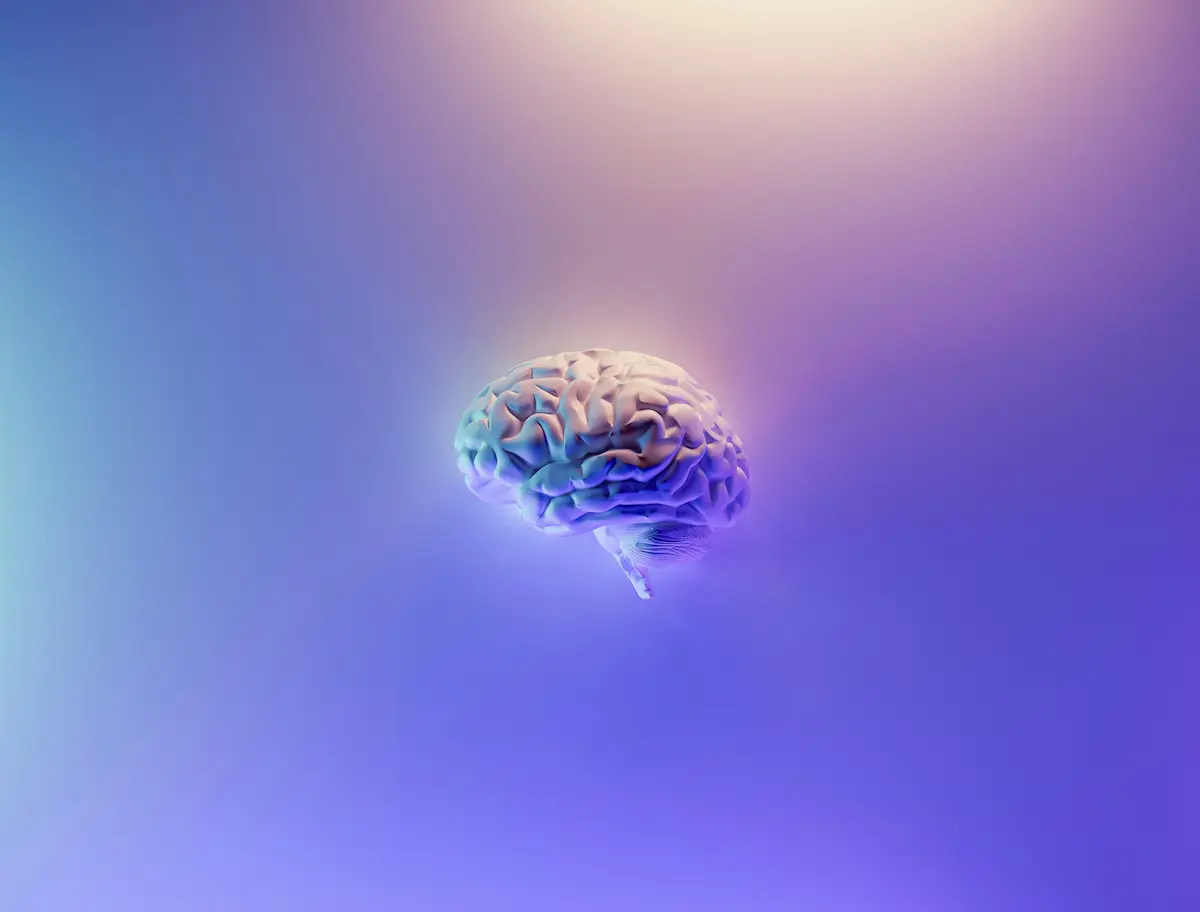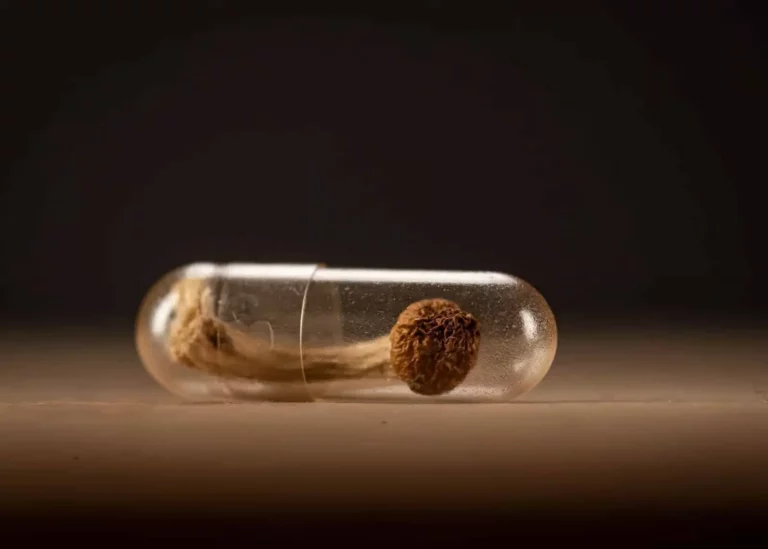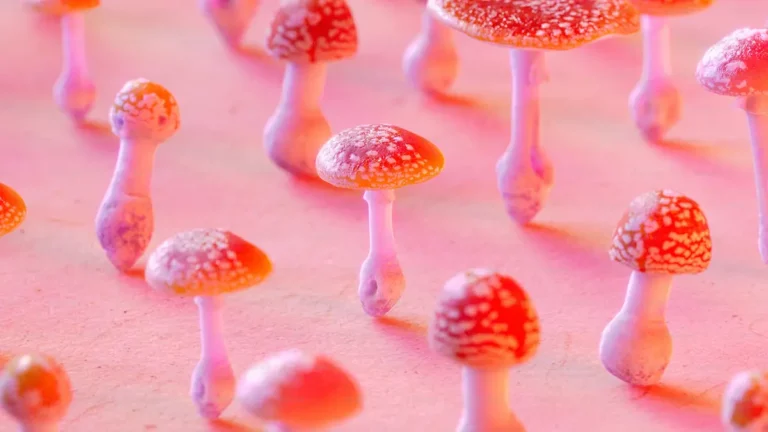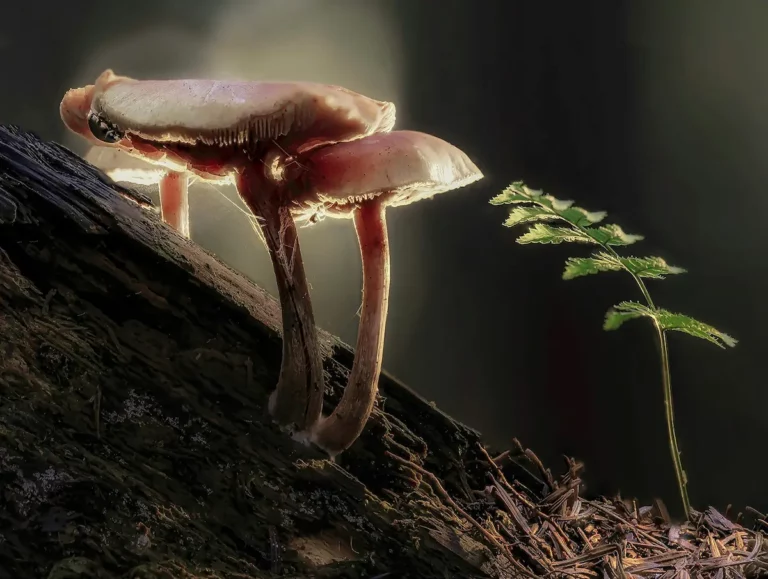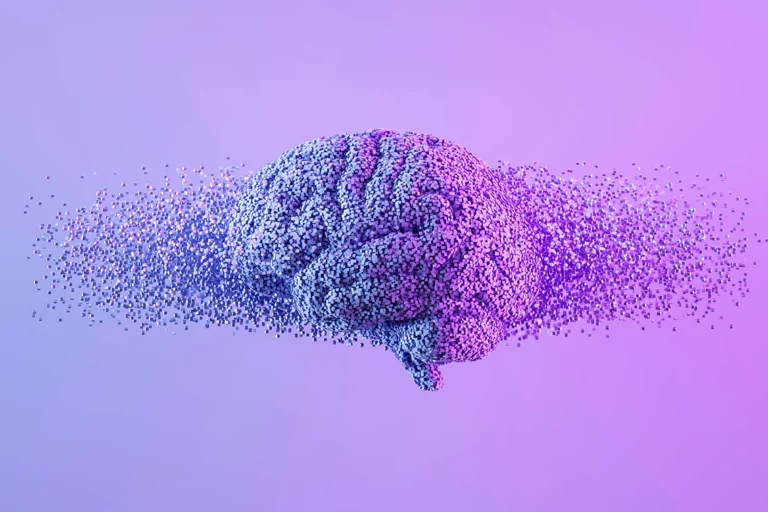How Psilocybin Influences the Brain
Psilocybin, the psychoactive compound found in “magic mushrooms,” has captured the fascination of scientists, psychologists, and curious minds alike. Beyond its recreational use, research into psilocybin’s effects on the brain has unveiled a profound potential for mental health treatment and understanding consciousness. In this article, we delve into the world of psilocybin, exploring its impact on the brain, backed by scientific studies and research.
Understanding Psilocybin
Before we discuss its effects, let’s understand what psilocybin is. It’s a naturally occurring compound found in certain species of mushrooms, notably those belonging to the Psilocybe genus. When ingested, psilocybin is converted into psilocin in the body, which then interacts with serotonin receptors in the brain. These receptors are key players in regulating mood, cognition, and perception.
The Psilocybin Experience
Many describe the effects of psilocybin as a journey within the mind. Users often report altered perceptions of time and space, vivid hallucinations, and a heightened sense of introspection. These experiences vary widely, influenced by factors such as dosage, set (mental state of the user), and setting (environment). We will now explore this metaphorical journey’s wide range of experiences.
Altered Perceptions of Time and Space
Psilocybin can distort the perception of time, leading to a feeling of time dilation or compression. Users may feel as though time is slowing down or speeding up, or they may experience moments of timelessness. Similarly, perceptions of space can be altered, with users reporting a sense of expansion or contraction in their surroundings.
Vivid Hallucinations
Psilocybin can induce visual, auditory, and tactile hallucinations that can be intricate, colorful, and profound. These hallucinations may include geometric patterns, shifting shapes, intense colors, and enhanced textures. Auditory hallucinations such as music or voices are also commonly reported.
Heightened introspection
Users often experience a heightened sense of introspection and self-reflection during a psilocybin experience. This can involve deep contemplation of personal issues, memories, emotions, and existential questions. Insights gained during these introspective moments can lead to profound realizations and personal growth.
Emotional and Spiritual Experiences
Psilocybin can evoke a wide range of emotional states, from euphoria and bliss to anxiety and fear. These emotional experiences are often deeply intertwined with the user’s thoughts and perceptions, leading to a sense of emotional catharsis and spiritual awakening. Many users report feeling a profound connection to nature, the universe, or a higher power during their psilocybin experiences.
Enhanced Sensory Perception
Psilocybin can heighten sensory perception, making colors appear more vibrant, sounds more intense, and tactile sensations more pronounced. This sensory enhancement can contribute to the overall immersive nature of the experience.
Note that the effects of psilocybin can vary widely from person to person and from one experience to another. Additionally, the psychological and emotional state of the user prior to ingestion can influence the direction and outcome of the experience.
But how does the brain support these profoundly transformative experiences? Let’s take a look at what science has discovered so far.
Brain Imaging Studies
Advancements in neuroscience have opened new avenues for understanding how psilocybin affects the brain. Functional magnetic resonance imaging (fMRI) and positron emission tomography (PET) scans have allowed researchers to observe changes in brain activity and connectivity during psilocybin experiences, providing valuable insights into its mechanisms of action.
Increased Connectivity
One of the most intriguing findings is the increase in connectivity between brain regions. Dr. Paul Expert and colleagues at King’s College London discovered that psilocybin promotes communication between brain regions that are not typically connected. This heightened connectivity, often referred to as hyperconnectivity, is believed to play a crucial role in the profound alterations in perception and consciousness experienced during a psilocybin trip.
Default Mode Network (DMN) Suppression
The Default Mode Network (DMN) is a network of brain regions associated with self-referential thoughts, mind wandering, and the sense of ego. Research led by Dr. Robin Carhart-Harris at Imperial College London revealed that psilocybin dampens the activity of the DMN. This temporary suppression or “quieting” of the DMN is thought to be linked to the dissolution of ego boundaries experienced during a psychedelic journey, leading to a sense of ego dissolution and interconnectedness with one’s surroundings.
Emotional Release
Studies have also highlighted psilocybin’s role in emotional processing. Research by Dr. Franz Vollenweider and his team at the University of Zurich demonstrated that psilocybin can intensify emotional experiences. This heightened emotional sensitivity may provide therapeutic benefits by allowing individuals to confront and process deep-seated emotions and traumas in a supportive and safe environment, facilitating emotional healing and personal growth.
Therapeutic Potential
The unique effects of psilocybin on brain function have sparked a renewed interest in its therapeutic potential. Clinical trials have explored its efficacy in treating various mental health conditions, including depression, anxiety, PTSD, and addiction.
Depression
Depression is a mental health condition that affects countless people, Some have found relief through traditional psychiatric treatments. These methods have certainly been a lifeline for some, providing tools to manage and alleviate symptoms. However, for others, these approaches only scratch the surface, leaving them still struggling to find lasting relief.
A landmark study conducted at Imperial College London showed promising results in treating depression with psilocybin. Participants who had struggled with treatment-resistant depression reported significant improvements in mood that persisted weeks after a single dose. Psilocybin’s ability to induce profound and transformative experiences may help break the cycle of rumination and negative thought patterns characteristic of depression.
Anxiety and PTSD
Research from Johns Hopkins University has demonstrated that psilocybin-assisted therapy can reduce symptoms of anxiety and PTSD. Patients undergoing psilocybin therapy reported a newfound sense of peace, increased mindfulness, and a shift in perspective regarding their traumatic experiences. Psilocybin’s ability to facilitate deep emotional processing may help individuals confront and integrate challenging memories and emotions, leading to long-lasting therapeutic benefits.
Addiction
Studies have also suggested that psilocybin may hold promise in addiction treatment. Research at New York University has shown encouraging results in helping individuals overcome alcohol and nicotine addiction through psilocybin-assisted therapy. Psilocybin’s ability to induce mystical experiences and enhance self-awareness may help break addictive patterns by promoting introspection, insight, and behavior change.
In conclusion, brain imaging studies have provided valuable insights into the effects of psilocybin on brain function, highlighting its potential to induce profound alterations in consciousness, emotional processing, and therapeutic outcomes. Further research is needed to fully understand the therapeutic mechanisms of psilocybin and optimize its clinical applications.
Psilocybin and SSRIs: Do They Work in Similar Ways?
Along with all of the new research regarding the effects of psilocybin on the brain the question always arises “how do mushrooms compare to conventional antidepressants like SSRIs (selective serotonin reuptake inhibitors)?” While both substances affect serotonin signaling in the brain, their mechanisms of action and therapeutic effects differ significantly. Here, we explore the current thoughts on whether psilocybin shares any similarities with SSRIs.
Serotonin Modulation
Both psilocybin and SSRIs influence serotonin neurotransmission, albeit through distinct mechanisms. SSRIs work by blocking the reuptake of serotonin, leading to increased levels of serotonin in the brain over time. This gradual accumulation of serotonin is believed to alleviate symptoms of depression and anxiety by enhancing mood regulation.
Psilocybin, on the other hand, acts as a serotonin receptor agonist, meaning it binds to and activates serotonin receptors in the brain. Specifically, psilocybin primarily interacts with the serotonin 2A receptor (5-HT2A), leading to profound alterations in perception, mood, and consciousness. Rather than simply increasing serotonin levels, psilocybin induces dynamic changes in brain activity and connectivity, resulting in a range of psychological effects.
Duration of Effects
One obvious difference between psilocybin and SSRIs is the duration of their effects. SSRIs typically require regular, daily dosing to maintain therapeutic efficacy, with noticeable improvements in mood often taking weeks to manifest. In contrast, a single dose of psilocybin can produce rapid and enduring antidepressant effects, with some studies reporting sustained improvements in mood lasting weeks to months after a single administration. This difference in duration suggests that psilocybin may have a more immediate and pronounced impact on mood compared to SSRIs.
Mechanisms of Action
While both psilocybin and SSRIs can alleviate symptoms of depression and anxiety, they do so through distinct mechanisms of action. SSRIs primarily target serotonin neurotransmission, whereas psilocybin exerts its effects through a combination of serotonin receptor activation and modulation of brain network activity. Psilocybin’s ability to induce mystical experiences, enhance emotional processing, and promote introspection sets it apart from conventional antidepressants, offering a unique approach to mental health treatment.
Therapeutic Potential
The therapeutic potential of psilocybin extends beyond its antidepressant effects, encompassing a range of mental health conditions such as anxiety, PTSD, and addiction. Clinical trials have demonstrated promising results with psilocybin-assisted therapy, showing efficacy in treating conditions that are often resistant to conventional treatments. While SSRIs remain a cornerstone of pharmacological therapy for depression and anxiety, the emergence of psychedelics like psilocybin represents a paradigm shift in mental health care, offering novel avenues for exploration and treatment.
While psilocybin and SSRIs both influence serotonin signaling in the brain, their mechanisms of action, duration of effects, and therapeutic potentials differ significantly. Psilocybin’s unique pharmacological profile and psychological effects distinguish it from conventional antidepressants, highlighting its potential as a transformative treatment for mental health disorders. Ongoing research aims to further elucidate the similarities and differences between psilocybin and SSRIs, paving the way for the development of innovative therapeutic approaches in psychiatry.
Safety and Legal Status
While the therapeutic promise of psilocybin is exciting, it’s crucial to address safety concerns and legal considerations. Psilocybin is generally considered safe when used in controlled settings, under the guidance of trained professionals. However, recreational use carries risks, including the potential for adverse psychological reactions.
In terms of legality, psilocybin remains a Schedule I controlled substance in many countries, including the United States. This classification poses challenges to research and limits access to its potential benefits.
Historical Context
Psilocybin and other psychedelics have a long history of use in various cultures for spiritual, medicinal, and ritualistic purposes. Indigenous peoples of the Americas, for instance, have used mushrooms containing psilocybin for centuries in religious ceremonies.
In the 1950s and 1960s, psilocybin gained attention in the West due to its association with the counterculture movement. Researchers like Timothy Leary and Richard Alpert (later known as Ram Dass) conducted studies on the psychological effects of psychedelics, including psilocybin.
However, the widespread recreational use of psychedelics led to their classification as Schedule I substances in the 1970s, effectively halting most scientific research into their potential benefits.
Recent Resurgence in Research
In recent years, there has been a resurgence of interest in psilocybin research, driven by promising clinical findings and shifting attitudes towards mental health. As we’ve seen, institutions such as Johns Hopkins University, Imperial College London, and the University of Zurich have spearheaded groundbreaking studies.
Mystical Experiences
A notable area of investigation is the occurrence of mystical or spiritual experiences induced by psilocybin. Research published in the Journal of Psychopharmacology suggests that a high dose of psilocybin can lead to profound mystical experiences characterized by a sense of unity, transcendence of time and space, and ineffability.
Neuroplasticity
Another emerging area of study is the impact of psilocybin on neuroplasticity—the brain’s ability to reorganize and form new neural connections. Preliminary evidence suggests that psilocybin may enhance neuroplasticity, potentially offering new avenues for treating conditions related to neural connectivity, such as Alzheimer’s disease.
End-of-Life Anxiety
Studies focusing on end-of-life anxiety and existential distress among terminally ill patients have shown promising results with psilocybin-assisted therapy. Patients undergoing palliative care reported reduced anxiety, a greater acceptance of mortality, and an improved quality of life after psychedelic experiences.
The Future of Psilocybin Research
As we look ahead, the future of psilocybin research appears bright. Ongoing studies continue to explore its therapeutic potential, safety profiles, optimal dosages, and long-term effects. Scientists are also investigating novel delivery methods, such as microdosing, which involves taking sub-perceptual doses of psilocybin over extended periods.
Conclusion:
Psilocybin offers a fascinating window into the human mind. Through altering brain connectivity, quieting the Default Mode Network, and facilitating emotional release, psilocybin opens doors to profound experiences and therapeutic breakthroughs. While legal and safety considerations remain, the potential for treating depression, anxiety, PTSD, and addiction is undeniably promising.
Though there is a lot we do not know. But one thing is clear: the transformative power of psilocybin on the brain is a journey worth exploring. Whether unlocking the mysteries of consciousness, offering solace to those in mental anguish, or simply broadening our understanding of the mind, psilocybin continues to captivate and inspire.
Our 5-Day Psilocybin Retreat
Sources:
- Carhart-Harris, R. L., & Goodwin, G. M. (2017). The Therapeutic Potential of Psychedelic Drugs: Past, Present, and Future. Neuropsychopharmacology : official publication of the American College of Neuropsychopharmacology, 42(11), 2105–2113.
https://doi.org/10.1038/npp.2017.84 - Griffiths, R. R., Johnson, M. W., Carducci, M. A., Umbricht, A., Richards, W. A., Richards, B. D., Cosimano, M. P., & Klinedinst, M. A. (2016). Psilocybin produces substantial and sustained decreases in depression and anxiety in patients with life-threatening cancer: A randomized double-blind trial. Journal of psychopharmacology (Oxford, England), 30(12), 1181–1197.
https://doi.org/10.1177/0269881116675513 - Lebedev, A. V., Kaelen, M., Lövdén, M., Nilsson, J., Feilding, A., Nutt, D. J., & Carhart-Harris, R. L. (2016). LSD-induced entropic brain activity predicts subsequent personality change. Human brain mapping, 37(9), 3203–3213.
https://doi.org/10.1002/hbm.23234 - Nichols D. E. (2016). Psychedelics. Pharmacological reviews, 68(2), 264–355.
https://doi.org/10.1124/pr.115.011478 - Palhano-Fontes, F., Andrade, K. C., Tofoli, L. F., Santos, A. C., Crippa, J. A., Hallak, J. E., Ribeiro, S., & de Araujo, D. B. (2015). The psychedelic state induced by ayahuasca modulates the activity and connectivity of the default mode network. PloS one, 10(2), e0118143.
https://doi.org/10.1371/journal.pone.0118143 - Vollenweider, F., Kometer, M. The neurobiology of psychedelic drugs: implications for the treatment of mood disorders. Nat Rev Neurosci 11, 642–651 (2010).
https://doi.org/10.1038/nrn2884

